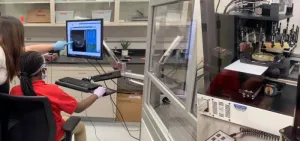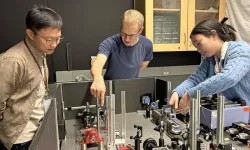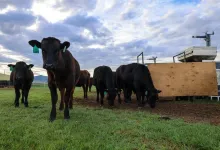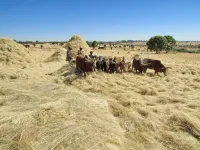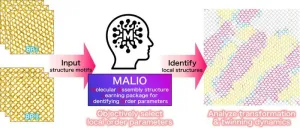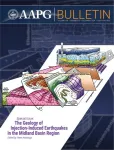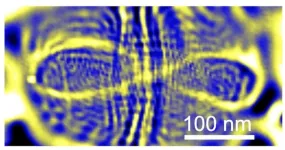(Press-News.org) The University of Colorado Anschutz Medical Campus will receive up to $46 million from the Advanced Research Projects Agency for Health (ARPA-H) Transplantation of Human Eye Allografts (THEA) program to advance pioneering research aimed at curing total blindness through human eye transplantation.
The award will support the work of the Total Human Eye-allotransplantation Innovation Advancement (THEIA) project team led by CU.
The project is led by principal investigator and surgeon-scientist Kia Washington, MD, and co-principal investigator Christene A. Huang, PhD, transplant immunologist. Both are professors at the University of Colorado School of Medicine and are nationally recognized leaders in plastic and reconstruction surgery, transplant surgery and immunology.
“Currently, there has never been a successful whole human eye transplant for the restoration of vision,” said Washington. “We believe the great advancements over the last two decades in technology, transplantation surgery and regenerative medicine now make restoration of vision possible.”
ARPA-H is a federal agency established to advance high-potential, high-impact biomedical and health research that cannot be readily accomplished through traditional research or commercial activity.
The CU Anschutz team will begin with animal models to forward optic nerve regenerative strategies, immunosuppression, and post-operative care, with the goal of advancing to human trial studies. Washington will lead the overall scientific team and the surgical team.
“One of the most complex parts of the procedure is the successful reattachment of the optic nerve. Think of it as fixing a broken electrical connection so that signals from the eye can be transmitted to the brain,” Washington said. “Monitoring and aftercare are equally important to make sure the brain continues to receive the correct signals and is accepting the new eye.”
Huang’s team will study how the immune system reacts to the new eye.
“Our goal is to make it easier for the body to accept the new eye without rejecting it. To do that, we will create practical methods to manage inflammation and prevent transplant rejection,” said Huang.
The team said the work could also be translated to other parts of the body.
“The techniques and advancements we develop could be used to treat blindness while offering new solutions for other neurodegenerative disorders that impact the central nervous system,” Washington said. “For example, treating conditions like spinal cord injuries or brain damage. This could also be used in progressive brain disorders like Alzheimer’s and Parkinson’s disease.”
This project will be in collaboration with several partners.
Johns Hopkins University will use a special type of molecule called a dendrimer to deliver genetic instructions to the retina and the optic nerve to help fix or modify how certain functions are working to improve vision. The team will also look for genes that regulate the nerves in the eye and use them to help them recover and regenerate more effectively.
The University of Wisconsin, Indiana University, and the National Eye Institute will work together to develop a bioengineered “nerve bridge” to connect the donor’s optic nerve with the recipient.
Researchers at the University of Southern California will work to create a system that uses electrical signals to support the successful addition of nerve cells into an existing part of the eye, improving function and helping with vision. Additionally, they will use gentle electrical currents to help cells adapt to their new environment.
Investigators at Cedars Sinai Medical Center will create protocol for the surgery to make sure donors of the eye are properly checked and approved before the procedure is performed.
The Foundation Fighting Blindness will manage reporting for this complex effort.
“Receiving this funding is a transformative milestone for CU Anschutz and our partners,” said Laura Buccini, DrPH, MPH, assistant vice chancellor for research development and strategy at CU Anschutz. “It accelerates our mission to revolutionize vision restoration and underscores our collective commitment to pioneering advances in regenerative medicine. By leveraging the combined expertise of our collaborators, we are poised to make significant strides, bringing new hope to those affected by vision loss.”
Video: CU Anschutz Research Team Aims to Cure Total Blindness
About the University of Colorado Anschutz Medical Campus
The University of Colorado Anschutz Medical Campus is a world-class medical destination at the forefront of transformative science, medicine, education and patient care. The campus encompasses the University of Colorado health professional schools, more than 60 centers and institutes and two nationally ranked independent hospitals - UCHealth University of Colorado Hospital and Children's Hospital Colorado – which see more than two adult and pediatric patient visits yearly. Innovative, interconnected and highly collaborative, the CU Anschutz Medical Campus delivers life-changing treatments, patient care and professional training and conducts world-renowned research fueled by $910 million in annual research funding, including $757 million in sponsored awards and $153 million in philanthropic gifts.
END
University of Colorado Anschutz Medical Campus-led team receives up to $46 million to develop innovative treatment to cure blindness
ARPA-H award will allow researchers to make whole eye transplantation a reality with the goal of restoring vision to patients with total blindness
2024-12-02
ELSE PRESS RELEASES FROM THIS DATE:
$1.7 million CDC grant will allow researchers to study spina bifida across the lifespan
2024-12-02
Researchers at the University of Arizona College of Medicine – Tucson received $1.7 million in funding from the Centers for Disease Control and Prevention to improve knowledge regarding the prevalence, mortality and health outcomes for people of all ages living with spina bifida.
Spina bifida is a birth defect that occurs when an embryo’s spinal cord does not properly close during the third and fourth weeks of pregnancy, resulting in a gap in the spine. According to the CDC, spina bifida occurs in 1 ...
Study: Even low levels of arsenic in drinking water raise kidney cancer risk
2024-12-02
New research findings from the Texas A&M University School of Public Health indicate that exposure to even low levels of arsenic poses significant health risks, including an increased risk of kidney cancer.
The incidence of kidney cancer in the United States rose by an average of 1.2 percent each year between 2011 and 2019 to become the seventh most common cancer. In the meantime, smoking — a well-established risk factor for kidney cancer — has continued to decline.
This led researchers to consider other possible contributing factors, including arsenic, a known cause of various cancers that is naturally occurring ...
How a middle schooler found a new compound in a piece of goose poop
2024-12-02
A group of young students became bonafide biomedical scientists before they even started high school. Through a partnership with a nearby university, the middle schoolers collected and analyzed environmental samples to find new antibiotic candidates. One unique sample, goose poop collected at a local park, had a bacterium that showed antibiotic activity and contained a novel compound that slowed the growth of human melanoma and ovarian cancer cells in lab tests.
Inequities in educational resources, especially those in science, engineering, technology and math (STEM), where ...
UBCO researchers engineer DNA to mimic biological catch bonds
2024-12-02
In a first-of-its-kind breakthrough, a team of UBC Okanagan researchers has developed an artificial adhesion system that closely mimics natural biological interactions.
Dr. Isaac Li and his team in the Irving K. Barber Faculty of Science study biophysics at the single-molecule and single-cell levels. Their research focuses on understanding how cells physically interact with each other and their environment, with the ultimate goal of developing innovative tools for disease diagnosis and therapy.
Two of Dr. Li’s doctoral students, Micah Yang and David Bakker, have engineered a new molecule that could transform how cells adhere to and communicate with one another.
Micah Yang, ...
Feeding grazing cattle seaweed cuts methane emissions by almost 40%
2024-12-02
Seaweed is once again showing promise for making cattle farming more sustainable. A new study by researchers at the University of California, Davis, found that feeding grazing beef cattle a seaweed supplement in pellet form reduced their methane emissions by almost 40% without affecting their health or weight. The study was published today (Dec. 2) in Proceedings of the National Academy of Sciences.
This is the first study to test seaweed on grazing beef cattle in the world. It follows previous studies that showed seaweed cut methane emissions 82% in feedlot cattle ...
Animal products improve child nutrition in Africa
2024-12-02
The consumption of milk products, eggs and fish has a positive effect on childhood development in Africa. This has been demonstrated in a recent study by the CABI's regional centre for Africa in Nairobi, Kenya and the University of Bonn. The researchers used representative data from five African countries with over 32,000 child observations. If the children had a diet containing animal products, they suffered less from malnutrition and related developmental deficiencies. The study has now been published in the journal PNAS.
Almost 150 million children under the age of five around the world suffer from serious growth and developmental ...
Dynamics of structural transformation for liquid crystalline blue phases
2024-12-02
Fukuoka and Tsukuba, Japan—Researchers have uncovered key insights about how liquid crystals, materials capable of forming complex ordered structures, transform between different phases. Published in PNAS, the study provides a clearer understanding of how these materials change their structures at the microscopic level. This research could provide a means to give a deeper insight into the transformation between different structures in a wider variety of materials.
Liquid crystals are materials that exhibit properties of both liquids and solids. They flow like liquids but can also ...
Study untangles how COVID-19 wreaks widespread damage in the body
2024-12-02
New research published in the journal Proceedings of the National Academy of Sciences sheds light on the pathways that drive organ damage and death in severe COVID-19 and helps explain why survivors of the disease can experience long-term complications.
“Our study resolves some of the long-standing unanswered questions about how the SARS-CoV-2 virus impacts the body,” said co-senior author Afshin Beheshti, Ph.D., professor of surgery and computational and systems biology at the University of Pittsburgh School of Medicine and associate director of the McGowan Institute for Regenerative Medicine. “The findings point ...
New research provides an improved understanding of earthquake hazards in the Permian Basin
2024-12-02
A new collection of published papers offers the most detailed and comprehensive breakdown yet of how water injected into the Permian Basin during oil and gas operations is changing subsurface pressures and causing earthquakes.
The Permian Basin in West Texas is the country’s most prolific energy-producing region, accounting for more than 40% of the nation’s oil production and about 15% of gas production. However, energy production has caused earthquakes and other challenges in recent years as oil and gas operators now manage roughly 15 million barrels of produced wastewater each day. This briny water comes to the surface ...
Physics experiment proves patterns in chaos in peculiar quantum realm
2024-12-02
Where do you see patterns in chaos? It has been proven, in the incredibly tiny quantum realm, by an international team co-led by UC Santa Cruz physicist Jairo Velasco, Jr. In a new paper published on November 27 in Nature, the researchers detail an experiment that confirms a theory first put forth 40 years ago stating that electrons confined in quantum space would move along common paths rather than producing a chaotic jumble of trajectories.
Electrons exhibit both particle and wave-like properties—they ...
LAST 30 PRESS RELEASES:
Making lighter work of calculating fluid and heat flow
Normalizing blood sugar can halve heart attack risk
Lowering blood sugar cuts heart attack risk in people with prediabetes
Study links genetic variants to risk of blinding eye disease in premature infants
Non-opioid ‘pain sponge’ therapy halts cartilage degeneration and relieves chronic pain
AI can pick up cultural values by mimicking how kids learn
China’s ecological redlines offer fast track to 30 x 30 global conservation goal
Invisible indoor threats: emerging household contaminants and their growing risks to human health
Adding antibody treatment to chemo boosts outcomes for children with rare cancer
Germline pathogenic variants among women without a history of breast cancer
Tanning beds triple melanoma risk, potentially causing broad DNA damage
Unique bond identified as key to viral infection speed
Indoor tanning makes youthful skin much older on a genetic level
Mouse model sheds new light on the causes and potential solutions to human GI problems linked to muscular dystrophy
The Journal of Nuclear Medicine ahead-of-print tip sheet: December 12, 2025
Smarter tools for peering into the microscopic world
Applications open for funding to conduct research in the Kinsey Institute archives
Global measure underestimates the severity of food insecurity
Child survivors of critical illness are missing out on timely follow up care
Risk-based vs annual breast cancer screening / the WISDOM randomized clinical trial
University of Toronto launches Electric Vehicle Innovation Ontario to accelerate advanced EV technologies and build Canada’s innovation advantage
Early relapse predicts poor outcomes in aggressive blood cancer
American College of Lifestyle Medicine applauds two CMS models aligned with lifestyle medicine practice and reimbursement
Clinical trial finds cannabis use not a barrier to quitting nicotine vaping
Supplemental nutrition assistance program policies and food insecurity
Switching immune cells to “night mode” could limit damage after a heart attack, study suggests
URI-based Global RIghts Project report spotlights continued troubling trends in worldwide inhumane treatment
Neutrophils are less aggressive at night, explaining why nighttime heart attacks cause less damage than daytime events
Menopausal hormone therapy may not pose breast cancer risk for women with BRCA mutations
Mobile health tool may improve quality of life for adolescent and young adult breast cancer survivors
[Press-News.org] University of Colorado Anschutz Medical Campus-led team receives up to $46 million to develop innovative treatment to cure blindnessARPA-H award will allow researchers to make whole eye transplantation a reality with the goal of restoring vision to patients with total blindness

